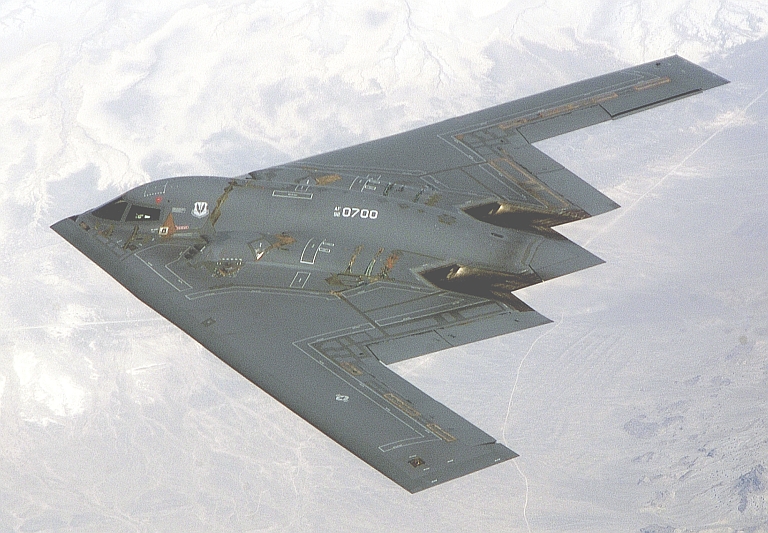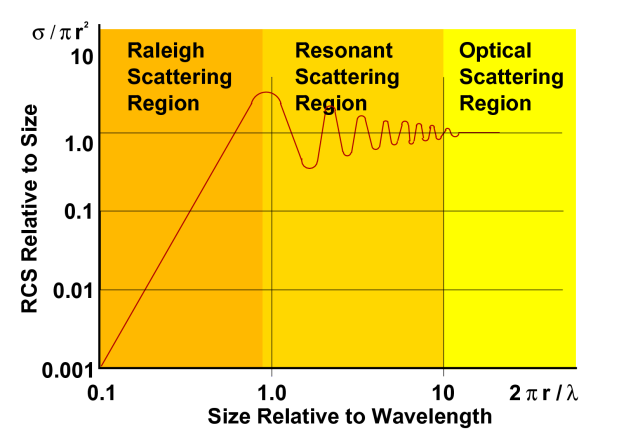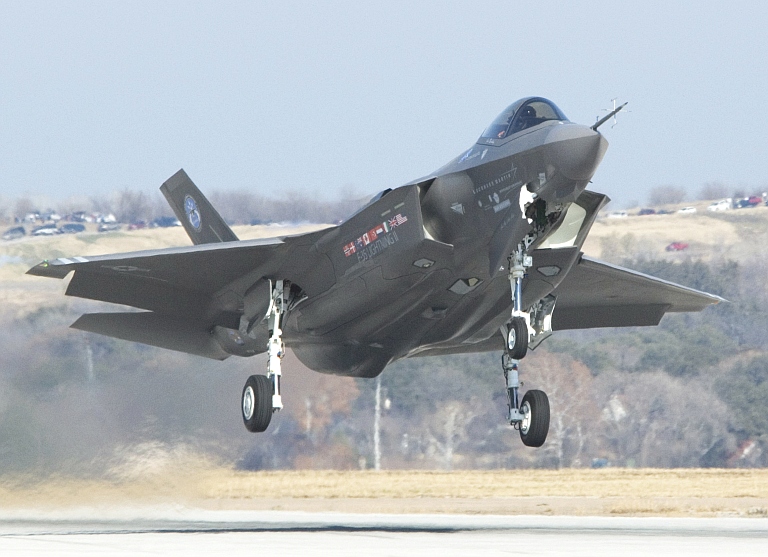S
-
Aviso de importancia, Reglamento del Foro actualizado. Reglas Técnicas, punto Q. Ir al siguiente link: Ver aviso
Estás usando un navegador obsoleto. No se pueden mostrar estos u otros sitios web correctamente.
Se debe actualizar o usar un navegador alternativo.
Se debe actualizar o usar un navegador alternativo.
¿En qué anda CITEFA?
- Tema iniciado INVMIL
- Fecha de inicio
http://www.ausairpower.net/APA-Rus-Low-Band-Radars.html
Russian / PLA Low Band Surveillance Radars(Counter Low Observable Technology Radars)
Technical Report APA-TR-2007-0901http://www.ausairpower.net/APA-Nebo-SVU-Analysis.html
by Dr Carlo Kopp, AFAIAA, SMIEEE, PEng
September, 2007
Updated May, December, 2008
Updated January, May, 2009
Updated February, 2010
Updated April, 2012
© 2007 - 2012 Carlo Kopp



(Images Rosoboronexport, RuMoD, NNIIRT, US DoD, Other)
The Northrop-Grumman B-2A 'Batwing' is sufficiently large that its shaping remains effective against lower band radars. The same is not true for fighters with LO shaping (US DoD).
Background
Prior to the rout of Saddam's extensive IADS in the 1991 Desert Storm campaign, the Soviets did not take US stealth technology seriously. Desert Storm changed that entirely, and the Soviets launched an effort to develop capabilities to detect VLO aircraft. With the collapse of the USSR funding dried up, but Russian design bureaus including NNIIRT, well known for their line of P-18 Spoon Rest VHF band radars, continued developing new systems operating in the lower bands - from VHF through UHF to L-band.
Most stealth design features are intended to scatter incoming illumination in a controlled fashion, evidenced by the use of edge alignment, faceting and other geometrical shaping features, supplemented by the use of absorbent materials. All of these techniques are intended to defeat radars operating in the geometrical optics and less frequently, resonance regimes of scattering. The precondition for this to work is that the wavelength be much shorter than the cardinal dimensions of the shaping feature of interest. An edge aligned engine inlet of typical dimensions will perform best in the centimetric Ku- and X-bands, and less so with increasing radar wavelength.
The Russian approach has been to invest in the further development of low band radars, especially operating in the VHF band. With wavelengths of the order of a metre or more, only very large stealth aircraft (e.g. B-2A) satisfy the physics requirement for geometrical optics regime scattering. A fighter sized aircraft such as the JSF will see most of its carefully designed shaping features fall into the resonance or Raleigh scattering regions, where shaping is of little or no import, and skin depth penetration of the induced electrical surface currents defeats most absorbent coatings or laminates.

The physics of radar scattering depend to a large extent on the size of the radar wavelength vs the physical size of the target. In the Raleigh scattering regime, the wavelength is similar or greater in magnitude to the physical size of the target, and the magnitude of the reflection is essentially proportional to the physical size of the target. As the wavelength is reduced, the resonant region is entered, where the wavelength is comparable in size to key shaping features on the target, and the magnitude of the reflection fluctuates strongly with wavelength and aspect. Finally, in the optical scattering regime, target shaping can be used to precisely control the magnitude and direction of reflections. The high effectiveness of stealth designs against decimetric and centimetric band radars reflects the reality that for most aircraft sizes, these wavelengths are a tenth to a hundredth of the size of key shaping features (Author).
Low band radars are not a panacea for the defeat of VLO (Very Low Observable) aircraft. Their angular accuracy has been until recently poor, and the required antenna size results in ungainly systems which are usually slow to deploy and stow, even if designed from the outset for mobility. The size and high power emissions of these radars, in types with limited mobility, makes them much easier to detect and destroy than typical mobile systems operating in the decimetric and centimetric bands, which can relocate rapidly after a missile shot.
Despite these drawbacks, the older Russian low band radars still provide a valuable early warning capability, and enable cueing of other sensors and platforms. In an IADS context, a55Zh6 Nebo, 1L13 Nebo SV, Nebo SVU or 5N84 Oborona would be used to cue the high power aperture X-band 30N6E Flap Lid/92N2E Tomb Stone series and 9S32M Grill Pan series engagement radars in the S-300PMU, S-400/S-400M and S-300VM systems to a small acquisition box in which the VLO aircraft can be found. This allows significantly more RF power to be focussed into a small volume of space, increasing the probability of detection. Some newer radars such as the Nebo SVU , Gamma DE and Protivnik GE are accurate enough to direct a missile shot, using the engagement radar primarily as a midcourse command/datalink channel to the missile.
Where fighters with high power aperture X-band radars are available, such as Irbis-E or Zhuk ASE equipped Su-30/35 Flanker E/G/H variants, a low band radar can provide GCI vectors to position the fighter near enough for acquisition of the target, if need be with other sensors such as an IR Search and Track set.

US DoD Band Allocation Chart
In practical terms one of the key advantages of VLO aircraft, surprise, is largely denied by the use of such systems. The VLO capability is still enormously valuable in terms of degrading or defeating most engagement radars and missile seekers, but the defender regains access to the early phases of the engagement cycle otherwise also defeated by VLO capability.
The US Air Force is expected to use the F-22A Raptor armed with the glide wing equipped GBU-39/B SDB to destroy a defender's low band systems in the opening minutes of an engagement, relying on the standoff range of the weapon and speed/altitude of the fighter to deny engagement opportunities by defending IADS elements being cued by the low band radars. Other fighters do not have these capabilities and become exposed to defending IADS elements.
The notion that Russian low band radars are artifacts of the Cold War with little combat value is foolish, as current production models are typically 'digitised' through most of the signal and data processing, and display components, and many now use solid state transmitters. At least two designs are AESAs (active phased array). Russian manufacturers have thus followed much the same trend as Western manufacturers, enhancing Cold War era systems designs with digital processing. More than often modern Digital Moving Target Indicator (DMTI) or digital pulse Doppler techniques are employed, some types also using Space Time Adaptive Processing (STAP), exploiting the high performance of COTS computing technology, readily available in the open market and easy to ruggedise for a semi-mobile application of this kind.
Russian industry is very actively marketing digital upgrades to the P-18 Spoon Rest, and new production digital 55Zh6 Nebo UE / Tall Rack and Nebo SVU VHF radars, specifically as a "Counter-Stealth" capability.

While the JSF is frequently criticised for the limitations of its stealth capability in the mid and upper microwave bands, the compact size of this aircraft makes it highly susceptible to detection by low band radars, unlike larger aircraft such as the B-2A Spirit (US Air Force).

Russian / PLA Low Band Surveillance Radars(Counter Low Observable Technology Radars)
Technical Report APA-TR-2007-0901http://www.ausairpower.net/APA-Nebo-SVU-Analysis.html
by Dr Carlo Kopp, AFAIAA, SMIEEE, PEng
September, 2007
Updated May, December, 2008
Updated January, May, 2009
Updated February, 2010
Updated April, 2012
© 2007 - 2012 Carlo Kopp



(Images Rosoboronexport, RuMoD, NNIIRT, US DoD, Other)
The Northrop-Grumman B-2A 'Batwing' is sufficiently large that its shaping remains effective against lower band radars. The same is not true for fighters with LO shaping (US DoD).
Background
Prior to the rout of Saddam's extensive IADS in the 1991 Desert Storm campaign, the Soviets did not take US stealth technology seriously. Desert Storm changed that entirely, and the Soviets launched an effort to develop capabilities to detect VLO aircraft. With the collapse of the USSR funding dried up, but Russian design bureaus including NNIIRT, well known for their line of P-18 Spoon Rest VHF band radars, continued developing new systems operating in the lower bands - from VHF through UHF to L-band.
Most stealth design features are intended to scatter incoming illumination in a controlled fashion, evidenced by the use of edge alignment, faceting and other geometrical shaping features, supplemented by the use of absorbent materials. All of these techniques are intended to defeat radars operating in the geometrical optics and less frequently, resonance regimes of scattering. The precondition for this to work is that the wavelength be much shorter than the cardinal dimensions of the shaping feature of interest. An edge aligned engine inlet of typical dimensions will perform best in the centimetric Ku- and X-bands, and less so with increasing radar wavelength.
The Russian approach has been to invest in the further development of low band radars, especially operating in the VHF band. With wavelengths of the order of a metre or more, only very large stealth aircraft (e.g. B-2A) satisfy the physics requirement for geometrical optics regime scattering. A fighter sized aircraft such as the JSF will see most of its carefully designed shaping features fall into the resonance or Raleigh scattering regions, where shaping is of little or no import, and skin depth penetration of the induced electrical surface currents defeats most absorbent coatings or laminates.

The physics of radar scattering depend to a large extent on the size of the radar wavelength vs the physical size of the target. In the Raleigh scattering regime, the wavelength is similar or greater in magnitude to the physical size of the target, and the magnitude of the reflection is essentially proportional to the physical size of the target. As the wavelength is reduced, the resonant region is entered, where the wavelength is comparable in size to key shaping features on the target, and the magnitude of the reflection fluctuates strongly with wavelength and aspect. Finally, in the optical scattering regime, target shaping can be used to precisely control the magnitude and direction of reflections. The high effectiveness of stealth designs against decimetric and centimetric band radars reflects the reality that for most aircraft sizes, these wavelengths are a tenth to a hundredth of the size of key shaping features (Author).
Low band radars are not a panacea for the defeat of VLO (Very Low Observable) aircraft. Their angular accuracy has been until recently poor, and the required antenna size results in ungainly systems which are usually slow to deploy and stow, even if designed from the outset for mobility. The size and high power emissions of these radars, in types with limited mobility, makes them much easier to detect and destroy than typical mobile systems operating in the decimetric and centimetric bands, which can relocate rapidly after a missile shot.
Despite these drawbacks, the older Russian low band radars still provide a valuable early warning capability, and enable cueing of other sensors and platforms. In an IADS context, a55Zh6 Nebo, 1L13 Nebo SV, Nebo SVU or 5N84 Oborona would be used to cue the high power aperture X-band 30N6E Flap Lid/92N2E Tomb Stone series and 9S32M Grill Pan series engagement radars in the S-300PMU, S-400/S-400M and S-300VM systems to a small acquisition box in which the VLO aircraft can be found. This allows significantly more RF power to be focussed into a small volume of space, increasing the probability of detection. Some newer radars such as the Nebo SVU , Gamma DE and Protivnik GE are accurate enough to direct a missile shot, using the engagement radar primarily as a midcourse command/datalink channel to the missile.
Where fighters with high power aperture X-band radars are available, such as Irbis-E or Zhuk ASE equipped Su-30/35 Flanker E/G/H variants, a low band radar can provide GCI vectors to position the fighter near enough for acquisition of the target, if need be with other sensors such as an IR Search and Track set.

US DoD Band Allocation Chart
In practical terms one of the key advantages of VLO aircraft, surprise, is largely denied by the use of such systems. The VLO capability is still enormously valuable in terms of degrading or defeating most engagement radars and missile seekers, but the defender regains access to the early phases of the engagement cycle otherwise also defeated by VLO capability.
The US Air Force is expected to use the F-22A Raptor armed with the glide wing equipped GBU-39/B SDB to destroy a defender's low band systems in the opening minutes of an engagement, relying on the standoff range of the weapon and speed/altitude of the fighter to deny engagement opportunities by defending IADS elements being cued by the low band radars. Other fighters do not have these capabilities and become exposed to defending IADS elements.
The notion that Russian low band radars are artifacts of the Cold War with little combat value is foolish, as current production models are typically 'digitised' through most of the signal and data processing, and display components, and many now use solid state transmitters. At least two designs are AESAs (active phased array). Russian manufacturers have thus followed much the same trend as Western manufacturers, enhancing Cold War era systems designs with digital processing. More than often modern Digital Moving Target Indicator (DMTI) or digital pulse Doppler techniques are employed, some types also using Space Time Adaptive Processing (STAP), exploiting the high performance of COTS computing technology, readily available in the open market and easy to ruggedise for a semi-mobile application of this kind.
Russian industry is very actively marketing digital upgrades to the P-18 Spoon Rest, and new production digital 55Zh6 Nebo UE / Tall Rack and Nebo SVU VHF radars, specifically as a "Counter-Stealth" capability.

While the JSF is frequently criticised for the limitations of its stealth capability in the mid and upper microwave bands, the compact size of this aircraft makes it highly susceptible to detection by low band radars, unlike larger aircraft such as the B-2A Spirit (US Air Force).

S
SnAkE_OnE
Carlo Kopp no es el mas recomendado como fuente..buscate algo en DTIC, Counter Stealth.
Carlo Kopp no es el mas recomendado como fuente..buscate algo en DTIC, Counter Stealth.
Jajajaja, ni idea quien es. Lo puse porque estaba en la página de los aussies.
Mer... hay mucho para leer de eso que pusiste:
https://www.google.com.ar/search?q=...57&sourceid=chrome&espv=210&es_sm=93&ie=UTF-8
S
SnAkE_OnE
Los rusos siguen desarrollando sus radares de ondas métricas. El ultimo parece ser el Nebo-UME que une un radar VHF con una radar blanda L. Con las antenas contrapuestas.Los radares métricos . . . son voluminosos y de corto alcance, pero no hay nada invisible a ellos (y son de tecnología recontra archi requete re mil probada desde los ´50).
Saludos.

http://www.janes.com/article/28401/nniirt-develops-new-dual-frequency-early-warning-radar
S
SnAkE_OnE
La posta en metrica es HF por la baja frecuencia, no tanto VHF.
Para la detección de aeronaves parece que están usando VHF creo que no tiene de otras métricas más grandes para esa tarea. Tal vez radar de ICBM sean así.La posta en metrica es HF por la baja frecuencia, no tanto VHF.
S
SnAkE_OnE
Para la detección de aeronaves parece que están usando VHF creo que no tiene de otras métricas más grandes para esa tarea. Tal vez radar de ICBM sean así.
Mira los derivados del P18
Enviado desde mi GT-I9300 mediante Tapatalk
y susana. Tamara. Vega y kolchuga???Mira los derivados del P18
Enviado desde mi GT-I9300 mediante Tapatalk
En la web del fabricante están todos sus proyectos actuales. Derivado directo del P-18 no parecen tener nada.Mira los derivados del P18
Enviado desde mi GT-I9300 mediante Tapatalk
http://www.nniirt.ru/
Vega hace el radar del A-50 creo que no de frecuencia métrica y Kolchuga es una detector de ondas de radar de procedencia ucraniana no un radar en si mismo.y susana. Tamara. Vega y kolchuga???
entonces pasoVega hace el radar del A-50 creo que no de frecuencia métrica y Kolchuga es una detector de ondas de radar de procedencia ucraniana no un radar en si mismo.
S
SnAkE_OnE
En la web del fabricante están todos sus proyectos actuales. Derivado directo del P-18 no parecen tener nada.
http://www.nniirt.ru/
fijate el link de argento
La ultima actualización de ausairpower fue en Abril del 2012. Ahora la empresa esta encarando nuevos proyectos con derivados directos del P-18 no siguieron. El Nebo-SVU es lo más aproximado.fijate el link de argento
S
SnAkE_OnE
La ultima actualización de ausairpower fue en Abril del 2012. Ahora la empresa esta encarando nuevos proyectos con derivados directos del P-18 no siguieron. El Nebo-SVU es lo más aproximado.
Averiguare!
Enviado desde mi GT-I9300 mediante Tapatalk
Jajajaja, ni idea quien es. Lo puse porque estaba en la página de los aussies.
Mer... hay mucho para leer de eso que pusiste:
https://www.google.com.ar/search?q=DTIC, Counter Stealth&oq=DTIC, Counter Stealth&aqs=chrome..69i57&sourceid=chrome&espv=210&es_sm=93&ie=UTF-8
Es un fumanchero bárbaro.
Hace articulos muy interesantes y le mete vueltas de rosca que otros no hacen y da para pensar pero.....
Al final del día manda fruta, pone cosas parciales como para tener razón y todo lo que dice apunta a apoyar sus teorias y punts de vista.
De nuevo, interesante si, pero no para tenerlo como fuente de nada.
Como que me da cosita cuando alguien lo cita.
Temas similares
- Respuestas
- 228
- Visitas
- 106K
- Respuestas
- 83
- Visitas
- 54K

